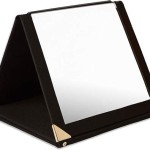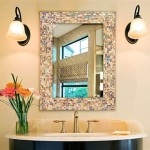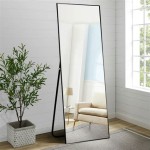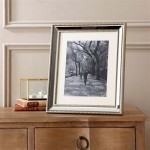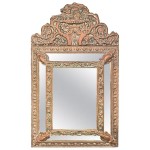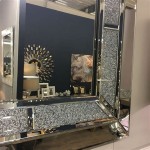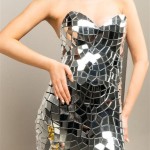One-Way Mirror Acrylic: Properties and Applications
One-way mirror acrylic, also known as two-way mirror acrylic, offers a unique combination of transparency and reflectivity. This versatile material functions as a mirror on one side while allowing visibility from the other under specific lighting conditions. This phenomenon is based on the principles of light transmission and reflection, and understanding these principles is key to utilizing one-way mirror acrylic effectively.
The manufacturing process of one-way mirror acrylic involves applying a thin metallic coating to one side of a sheet of clear or tinted acrylic. This coating, often composed of aluminum or silver, is carefully calibrated to allow partial light transmission and partial reflection. The resulting material appears as a mirror when the viewing side is significantly brighter than the observed side. The difference in light levels is the critical factor determining the effectiveness of the one-way mirror effect.
The effectiveness of the one-way mirror illusion relies on a significant difference in light levels between the two sides. In a brightly lit room, the mirrored side reflects most of the light, appearing opaque to observers on that side. Conversely, a relatively darker observation area on the other side allows viewers to see through the acrylic, as the reflected light from the brighter room is more intense than the light originating from the darker side.
The level of light transmission and reflection is determined by the metallic coating's thickness and composition. A thicker coating increases reflectivity and reduces light transmission, enhancing the mirror effect. Conversely, a thinner coating allows more light to pass through, making the observation from the darker side clearer. Choosing the right coating is essential for achieving the desired balance between reflectivity and transparency.
One-way mirror acrylic finds applications in a wide range of fields. In security and surveillance, it allows discreet observation of activities without being noticed. This makes it suitable for security booths, interrogation rooms, and research facilities. The ability to observe subjects without their knowledge is crucial in these environments.
In the entertainment industry, one-way mirror acrylic is used to create special effects and illusions. It can be used for stage magic, hidden reveals, and interactive exhibits. This material provides a unique way to manipulate the audience's perspective and create engaging visual experiences.
Architectural applications of one-way mirror acrylic include creating a sense of privacy and openness in spaces like offices and homes. It can be integrated into windows, partitions, and skylights, offering both natural light and a degree of seclusion. This duality is highly valued in modern design, where privacy and light are both essential considerations.
Beyond these applications, one-way mirror acrylic is used in scientific research, medical facilities, and educational settings. It can be used in experiments involving animal behavior, in medical observation rooms, and in educational demonstrations exploring light and optics. Its versatility makes it suitable for a wide range of scientific and educational purposes.
When installing one-way mirror acrylic, careful consideration of lighting conditions is paramount. Achieving the desired one-way mirror effect necessitates ensuring a significant difference in light levels between the two sides. Proper lighting design is crucial for effective implementation.
Maintenance of one-way mirror acrylic involves cleaning the surface with appropriate cleaning solutions. Abrasive cleaners should be avoided as they can scratch the metallic coating and affect the mirror effect. Gentle cleaning with soft cloths and appropriate cleaning agents is recommended.
One-way mirror acrylic is available in various sizes and thicknesses to suit specific project requirements. Choosing the correct thickness is essential for structural integrity and the desired level of reflectivity. Consulting with suppliers can help determine the optimal specifications for a particular application.
In addition to standard one-way mirror acrylic, specialized variations are available, including tinted options that offer enhanced privacy and light control. Tinted versions can provide specific aesthetic effects and further control light transmission and reflection.
The cost of one-way mirror acrylic depends on factors such as size, thickness, and coating type. Larger sheets and thicker acrylic with specialized coatings generally command higher prices. Understanding these factors can help in budgeting and material selection.
Proper handling and installation are crucial to maintain the integrity of one-way mirror acrylic. Careful handling during transportation and installation prevents scratches and damage to the delicate metallic coating. Following manufacturer recommendations regarding handling procedures is essential.

See Thru Mirror Etplastics

Transpa Two Way And One Mirrors From Reflection S Inc

Plaskolite Fabback See Thru Mirror Acrylic 1 8 4 X Poly

One Way Mirror Two Smart Infinity Security 12 034 X 0 04

Clear Mirror Rose Gold Glass Sheet One Way Acrylic China Plastic S Pvc Made In Com

One Way Mirror Acrylic Sheet 1mm Silver Plastic 1220x2440mm Laser Cutting China Made In Com

Om Sai One Way Mirror Acrylic Sheet 1 2 Mm

Enhance Privacy And Style With One Way Mirrors The Ultimate Guide To Their Benefits S

Sibe R Plastic Supply 1 8 Colors Mirror Acrylic Plexiglas Circles

12 X18 X1 16 Mirror Acrylic 1 Thick Silver Tone Sheet Zlazr

